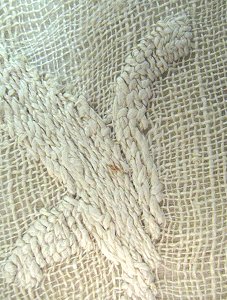
Inv.Nr. TM ..... (Schultervelum), 15. Jh.
ge--Klosterstich
it---Punto stuoia,
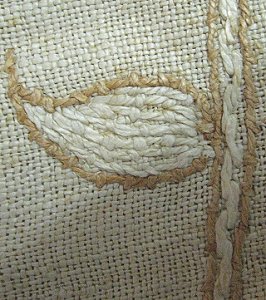
Inv.Nr. TM 20020, 1577
ge--Klosterstich, Rückstich, Vorderseite
it---Punto stuoia,
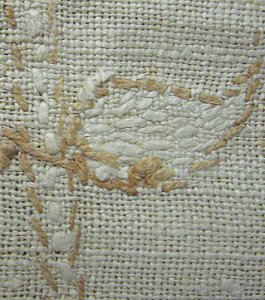
Inv.Nr. TM 20020, 1577
ge--Klosterstich, Rückstich, Gegenseite
it---Punto stuoia,
Annatextiles VOCABULAR - Embroideries |
| index voca---alphabetical order: german english italiano---embroideries |
| *ge--- deutsch | *e--- english | *fr--- français | *it---
italiano |
Leinenstickerei Bodenseegebiet 15. bis 17. Jahrhundert, Kennzeichen ist die grosse Anzahl verschiedenster Linien-, Flach-, Schling-, Kreuzstiche auf Leinengewebe. |
Linen Embroidery, Whitework embroidery, Lake of Konstanz region, 15th – 17th century, Characteristic: great number and variety of stitches – Satin stitch, Buttonhole and Feather stitches, Cross stitch – on a linen ground fabric. |
Broderie blanche, région du Lac de Constance XVe - XVIIe siècle Caractéristique : le grand nombre et la variété des points – point de devant, point lancés, point de feston, point de croix – sur un tissu de fond en lin. |
Ricamo bianchi, regione lago di Costanza Fra il XV e il XVII secolo Una delle peculiarità più raffinate di questi ricami, sia per tovaglie, teli o paliotti ad uso ecclesiastico sono i soggetti naif, raccontati con vivacità. |
| In Schweizer
und ausländischen Sammlungen haben sich rund 400 dieser
Stickereien erhalten, eine Blütezeit lässt sich im
späten 16. und frühen 17. Jahrhundert feststellen. Den
aufgestickten Familienwappen entsprechend kann man sie
ins Gebiet der deutschsprachigen Schweiz lokalisieren,
französische oder italienische Wappen oder Inschriften
sind nicht bekannt. Es scheint naheliegend, ist aber
bislang nicht bewiesen, dass Orte mit bedeutender
Leinwandproduktion wie St.Gallen und die Bodenseegegend
auch Zentren der Leinenstickerei bildeten. Die
nördlichen Grenzgebiete der Schweiz: Elsass,
Schwarzwald, Süddeutschland, müssen ins
Verbreitungsgebiet miteinbezogen werden. Zu den reizvollsten Eigenheiten dieser Stickereien des 15. - 17. Jahrhunderts gehört das lebendige, naive Erzählen, sei es auf den im Alltag gebrauchten Tischdecken und Rücklaken oder auf Altartüchern im kirchlichen Bereich. Es überwiegt die christliche Thematik, ob nun biblische Szenen oder symblolische Darstellungen wiedergegeben sind. Die verwendeten Materialien und Sticktechniken sind innerhalb der Gruppe einheitlich: Das Grundgewebe besteht aus Leinwand, in Ausnahmefällen aus Leinwand mit baumwollener Kette. Dieses Gewebe bildet nicht blosse Unterlage, sondern bleibt immer sichtbar, ohne zum vorwiegend weissen Stickgarn in Konkurrenz zu treten. Daneben kommt auch braunes und blaues Stickgarn vor, und in einigen Fällen verwendete man zusätzlich farbige Seiden-, Metall- und Wollfäden. Gründe für das Zurückgehen der Leinenarbeiten im 17. und 18. Jahrhundert lassen sich nur vermuten: Der 30jährige Krieg hinterliess seine Spuren vor allem in Deutschland, aber Änderungen in der Gestaltung der Innenräume, auch in der Kleidermode, sind zu nennen. Die kunstvollen Nähspitzen werden nun beliebt. (Text aus: Anne Wanner-JeanRichard, Leinenstickereien des 15. bis 17. Jahrhunderts, St.Gallen, 1990, S. 7). Les collections suisses
et étrangères conservent quelques 400 pièces de cette
technique, qui connut son apogée entre la fin du XVIe
siècle et le début du XVIIe siècle. Grâce
aux armoiries qui y sont brodées, ces pièces peuvent
être attribuées à la Suisse germanophone, aucun emblème ou inscription italien ou
français n’y étant répertorié. Il semble fort
probable, bien que cela reste à prouver, que les plus
importants sites de production du lin devinrent aussi des
hauts-lieux de la broderie blanche. C’est le cas à
Saint-Gall et dans la région du lac de Constance. Les
régions limitrophes au nord de la Suisse –
l’Alsace, la Forêt noire et l’Allemagne du sud
– doivent être incluses dans cette aire de
répartition. |
Some 400 pieces of pieces made in this technique
are preserved in Swiss and foreign collections. It
flourished mainly at the en dot the 16th and beginning of
the 17th century. Thanks to the coats of arms embroidered
on them, they can be attributed to the German parts of
Switzerland. No French or Italian emblem or inscription
is to be found on them. Most probably, but this remains
to be proven, the main linen production centres also
became the main centres of this handicraft. Such was the
case of Sankt Gallen and the region of Lake Konstanz. The
regions bordering Northern Switzerland – Alsace, the
Black Forest and Southern Germany – are to be
included in this area of distribution. One of the finest particularities of these embroideries produced between the 15th and the 17th century lies in the vitality and freshness of their narrative evocations, be it on the tablecloths and seat covers for domestic daily use or on the liturgical linen for service on the altar. Christian themes dominate, both in biblical scenes or symbolic representations. The materials used and the embroidery techniques are consistant in the group: the ground fabric is of linen, exceptionnally linen with a coton warp. The fabric doesn’t merely serve as the ground, but always remains visible, without clashing with the dominating white embroidery thread. Brown and blue embroidery threads could also be used, and in certain cases coloured silk threads were also used as well as metallic or wool threads. The reasons for the decline of whitework embroidery during the 17th and 18th century are not known: was it due to the Thirty Years’ War, of which mainly Germany suffered the after-effects? Or must it be attributed to changes in the arrangement of domestic interiors and the evolution of costume? At any rate, lace-work henceforward captured popular favour. Le collezioni svizzere
ed estere conservano circa 400 ricami effettuati con
questa tecnica. Quest‘ultima ha conosciuto il suo
massimo apogeo tra la fine del XVI e l’inizio del
XVII secolo. |
Photonachweis: - Textilmuseum St.Gallen (Schweiz |
Die
nachfolgenden Beispiele stammen aus der Sammlung des Textilmuseums St.Gallen (Schweiz) und privaten Sammlungen |
The following
examples belong to the collection of the Textilmuseum St.Gallen (Switzerland) and private collections Les exemples suivants proviennent de: - Musée du textile Saint-Gall - Collections privées |
|
 Inv.Nr. TM ..... (Schultervelum), 15. Jh. ge--Klosterstich it---Punto stuoia, |
 Inv.Nr. TM 20020, 1577 ge--Klosterstich, Rückstich, Vorderseite it---Punto stuoia, |
 Inv.Nr. TM 20020, 1577 ge--Klosterstich, Rückstich, Gegenseite it---Punto stuoia, |
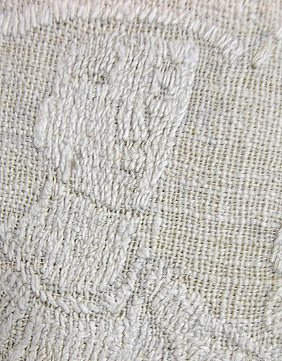 Inv.Nr. TM 43161 ge--Klosterstich, Vorderseite it---Punto stuoia |
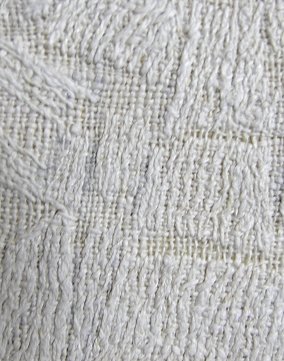 Inv.Nr. TM 43161 ge--Klosterstich, Vorderseite it---Punto stuoia |
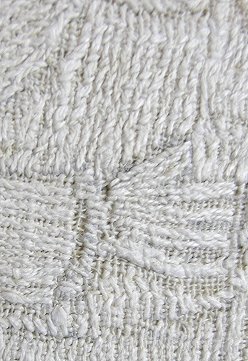 Inv.Nr. TM 43161 ge--Klosterstich, Vorderseite it---Punto stuoia |
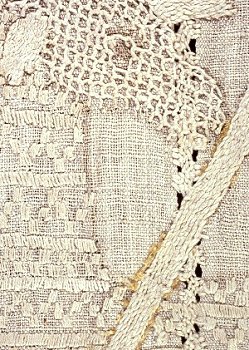 Inv.Nr. TM 20011 ge--Klosterstich, Flachstich, Schlingstich it---Punto stuoia; punto piatto |
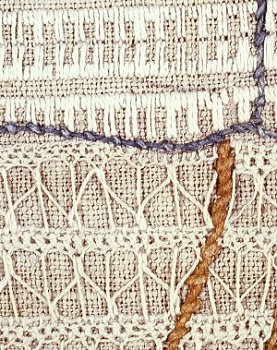 aus: Erzengel, privat, Iklé ge--Klosterstich; Plattstich/Flachstich; Schlingstich (Festonstich) it---Punto stuoia, punto piatto, punto festone |
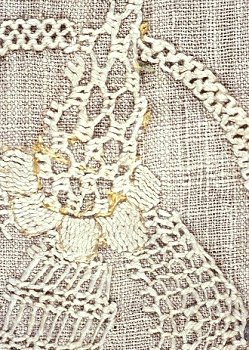 Inv.Nr. TM 20011 ge--Klosterstich, Schlingstich, Flechtstich it---Punto stuoia |
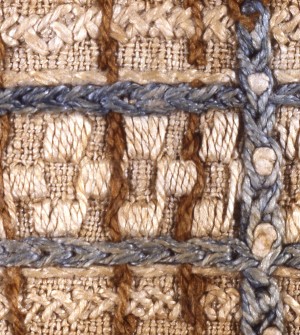 Inv.Nr. TM 20014 ge--Plattstich/Flachstich; Stielstich; Zopfstich it---Punto piatto, punto erba, punto incrociato legato |
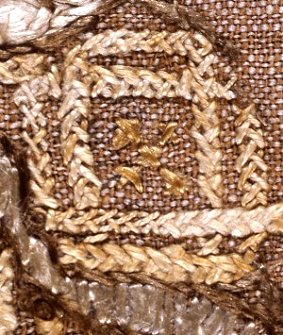 TM 20001 ge--Zopfstich; Kreuzstich; Plattstich/Flachstich, Vorderseite it---Punto incrociato legato, punto croce |
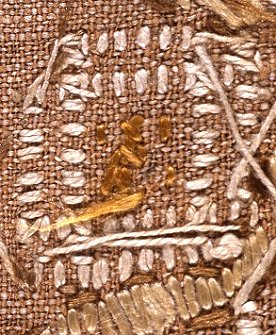 Inv.Nr. TM 20001 ge--Zopfstich; Kreuzstich; Plattstich/Flachstich, Gegenseite it---Punto incrociato legato, punto croce |
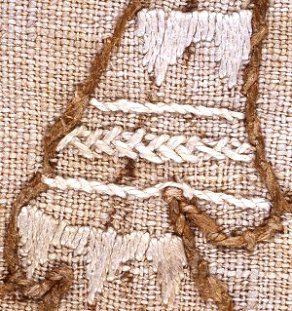 Inv.Nr. TM 20014 ge--Klosterstich; Plattstich/Flachstich; Zopfstich it---Punto stuoia; punto piatto; punto incrociato legato |
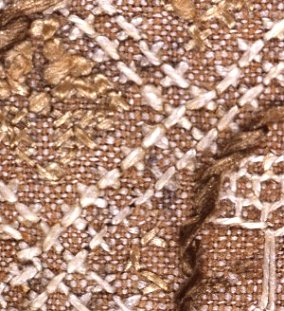 Inv.Nr. TM 20001 ge--Kreuzstich; Festonstich, Vorderseite it---Punto croce, punto festone |
|
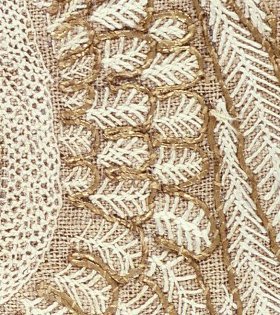 aus: Erzengel, privat, Iklé ge--Flechtstich, Klosterstich, Festonstich, umschlungener Hexenstich it---Punto mosca, punto stuoia, punto festone, punto strega legato |
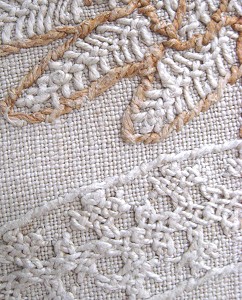 front Inv.Nr. TM 40071 (Hieronymus Bolt, Villigen), 1585 ge--Flechtstich, , Klosterstich it---Punto mosca, punto stuoia |
|
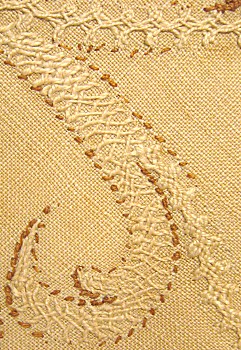 Inv.Nr. TM 43160 ge--Klosterstich früh; Flechtstich auf Hexenstich/Zwifelstrickstich; umschlungener Hexenstich it---Punto stuoia; punto spirito su punto incrociato, Punto crociato ripassato |
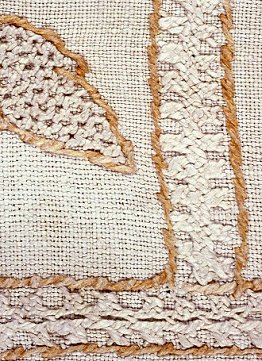 Inv.Nr. TM 40071 (Hieronymus Bolt, Villigen), 1585 ge--Flechtstich auf Hexenstich/Zwifelstrickstich; umschlungener Hexenstich it---Punto spirito su punto incrociato, Punto crociato ripassato |
|
| index
voca names: german english italiano embroideries |
Last revised September 2016 |